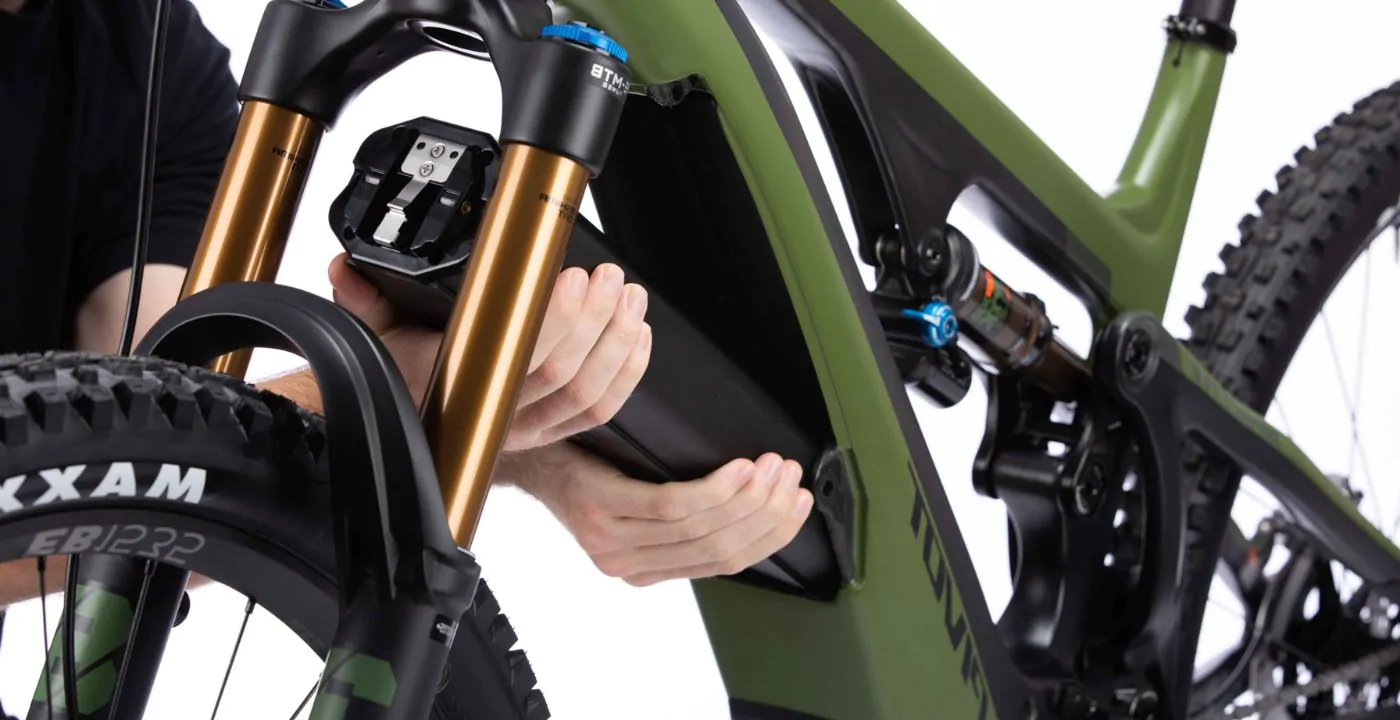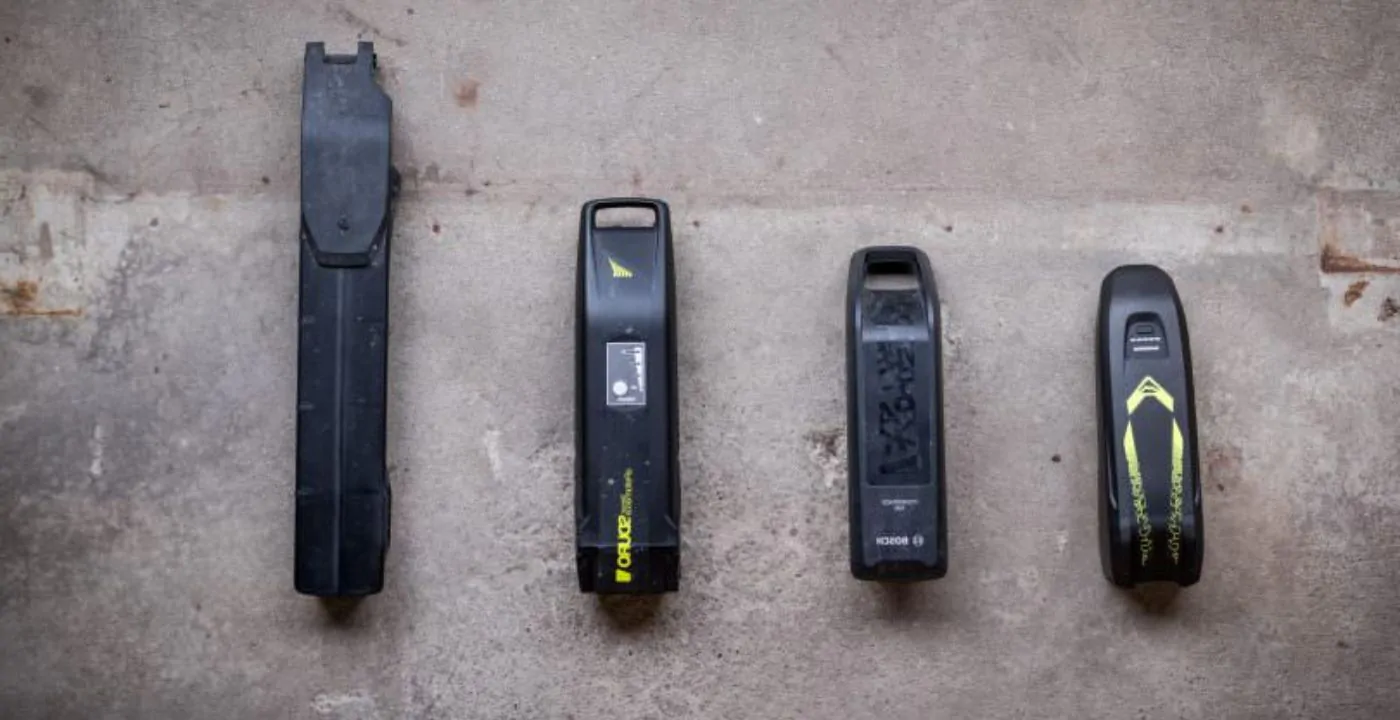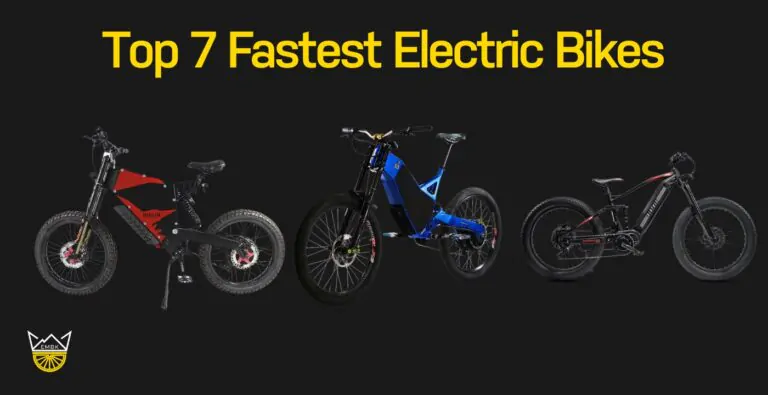
When looking at the length of an E-bike batteries life, it really depends on whether you’re asking how many miles an e-bike battery lasts, or how long is the lifespan of an e-bike battery. Fortunately for you, we’re going to answer both questions, and give you a little bit of insight into how to squeeze as much use as you can from them.
The question of how many miles an e-bike battery lasts is always going to depend on the bike itself. Different manufacturers claim different longevity; most pedal-assisted systems should last around 50-70 miles, but there are some bikes – like the Optibike R22 Everest, for instance – that claim up to 300 miles of powered assistance.
Of course, the mileage is going to depend on how well you’ve treated the battery, so that’s why we’ve written a comprehensive guide on just what is going on with these batteries, from electrolyte to charging cycles, we’ve got all you need.
Alternatively, if you are looking at the lifespan of an E-bike, then typically it is in the region of 3-5 years, but again this is totally dependant on usage and the type of battery. Which is something we will be digging into.
How Electric Bike Batteries Work

There are two major types of e-bike batteries: Lead acid and Lithium-ion. Lead acid batteries tend to be on the cheaper side and don’t last as long as lithium-ion batteries. This is because the lead deteriorates much more quickly.
Lead-Acid Batteries
Lead-acid batteries are largely being phased out by lithium-ion batteries, but they’re still present in budget models, so it’s worth understanding how they work. Only three components are used in the reaction: lead plates, sulphuric acid (electrolyte) and lead sulphate (energy sink).
As power is drawn from the battery, the sulphuric acid reacts with the lead plates to form lead sulphate. This lead sulphate is essentially an indicator of how drained the battery is. When recharging, the energy causes the inverse reaction and separates the lead sulphate into the lead plates and sulphuric acid again, storing the chemical potential energy to be used when the bike motor is being used.
The problem with this is that the reverse reaction dilutes the sulphuric acid every time it occurs, leading the battery to gradually lose power, with the problem seeming especially pronounced in the lead-acid reaction because the lithium-ion reaction is much more efficient.
If you’re on the nerdy side, like us, you can take a look at Victron Energy’s guide to lead acid batteries to find out more.
Lithium-Ion Batteries
Lithium-ion batteries are the standard for e-bikes now and it’s very rare that you’ll find a decent quality e-bike without one of these because they’re both more efficient and twice as light as their lead counterparts.
Lithium-ion batteries work similarly, by using an electrolyte to facilitate the transfer of chemical potential energy to electrical energy. But rather than using a full-blown chemical reaction, it just deals with ions. An ion is a molecule that has an uneven number of electrons to protons, which gives it a net positive or negative charge.
Put simply, these ions can be drawn across a barrier that doesn’t allow electrons to pass, allowing us to charge up the battery to potential energy, or discharge the energy to power our motors. We have more information in our article on how electric mountain bikes work.
Because of this, you can expect a lithium-ion battery to retain 80% of its capacity after about 500 charging cycles. Far better than that of its lead-acid counterpart.
| Battery Type | Lead-Acid Battery | Lithium-Ion Battery |
|---|---|---|
| Contains electrolyte | ✓ | ✓ |
| Composition dilutes over time | ✓ | X |
| Utilises ionisation | X | ✓ |
| Safe depth of discharge | ~50% | ~80% |
How to Prolong e-Bike Battery Lifespan

If you want to keep a battery fresh for as long as possible, understanding battery charging cycles is probably the most important thing – and this goes for any kind of battery, not just an e-bike’s.
What are Battery Charging Cycles?
You’ve probably noticed that when you first get a phone, a charge can last ages, but the longer you have it, the faster it seems to run out. This isn’t some scheme from phone companies trying to get you to buy the newest edition, but simply a consequence of using a battery.
Every time the battery discharges and recharges, it gets a little bit less efficient each time, and this is exaggerated by the way that you charge it as well. The number one thing you need to look out for is overcharging, especially with lead-acid batteries.
Overcharging on lead-acid batteries causes the water in the dilute sulphuric acid to break down into hydrogen and oxygen, essentially giving you less “battery” to work with.
Lithium-ion batteries suffer a similar problem of electrolyte breakdown, but since there are fewer “phases” of the electrolyte, the breakdown occurs more slowly.
So, the answer to which type of ebike battery lasts the longest is lithium-ion, every time. There’s a new type of battery emerging on the market called lithium-cobalt, which works similarly, and is the source of Optibike’s claims for the longest-distance e-bikes.
How to Efficiently Charge Your e-Bike
Though the chemistry behind batteries can be a little complicated, the solutions are actually quite easy, you just have to pay a little bit of attention.
1. Never Overcharge Your Battery
As we’ve mentioned before, overcharging is the main cause of electrolyte breakdown, so if you want to keep your battery in check, unplug your battery at around 85%.
2. Make Sure Not to Leave Batteries in a State of Low Charge
When a battery reaches a low state of charge, the chemicals will form into new states which can degrade the battery if left for a long time. The solution is to charge it as soon as you can, but don’t worry if you can’t immediately charge the bike, this only becomes a problem if left for a long time. For lead batteries, this is around 50% charge and 20% for lithium-ion batteries.
3. Don’t Charge the Battery Too Quickly
Standard chargers are standard for a reason; the current used to charge a battery should be at most 20% of the current that the battery operates at. It may seem fun to get some “suped up” charger, but it’ll cost your battery in the long run.
Best brands for battery life
Even though it’s clear that Lithium-Ion batteries are the king of e-bike batteries, lab results aren’t always a great guide to what you should expect from real-life applications, so we’ve decided to include a few specs from some of the best brands out there.
| eMTB | Optibike R22 Everest | Aventon Aventure | Spectral CF 8 |
|---|---|---|---|
| Range | ~300 Miles | ~50 Miles | ~40 Miles |
| Battery Type | Lithium-Ion (cobalt) | Lithium-Ion | Lithium-Ion |
| Continuous Wattage | 1700 | 750 | 900 |
As you can see, the Optibike is an extreme outlier, and represents a new stage of e-bike development which we hope we’ll be seeing soon. Though right now, the 300-mile range is only the claim of the manufacturer, and because the bikes are so expensive, they haven’t been extensively tested by third parties yet.
Other Tips to Keep Your Bike Fresh

Though charging cycles are the main way to keep your bike running at max capacity, there are a few extra things that might give you those extra miles when you need them.
Temperature
Whilst it’s true that a high temperature can give a battery more capacity, this only works in the short term, and keeping your bike at a high temperature will only degrade it more quickly.
On the other end of the spectrum, charging your bike at close to or below freezing can also be damaging, and frustratingly, it can be much slower too. So save yourself a little trouble by just charging the battery at room temperature, it’s that simple.
Keep Them Out of Water
E-bikes are water resistant; they’d be pretty useless if they couldn’t stand a little drizzle, but that doesn’t mean that they like water. Over time, heavy exposure to water can degrade the battery, especially lead-acid batteries. Don’t worry, you don’t have to stop riding your bike in the rain, just store them inside somewhere, even if it’s only a shed.
Frequently Asked Questions (FAQs)
How Often Do You Replace the Battery on an e-Bike?
If you’re keeping your bike in order, we’d say that after 1000 cycles, it’s about time to recharge your bike, but 1000 cycles can be different for everyone. If you’re cycling every day and forgetting to unplug it when it’s at max capacity, you can expect the reaper after only 2 years, but for others, they can last far longer such as 4-5 years.
Can an Electric Bike Battery Drain if Not Used for a Long Time?
Yes, as is the case with all batteries – car batteries, phone batteries, you name it, they drain slowly over time. This in itself isn’t a danger, but if left too long, the batteries can drain to a point where degradation takes on a much faster rate. You don’t have to keep them at 100%, but we’d suggest you keep an eye on a bike if you’ve not ridden it for a while.
Final Thoughts
Though there are a variety of factors that go into the mileage of your battery, the truth is that if you’re keeping your bike indoors somewhere and you’re not leaving them either flat or overcharged, you should have a piece of tech that’ll last you for many trails, and even more memories.
E-bike battery technology has come a long way already, but we’re curious to see just how far the industry can take it. With lithium-cobalt batteries arriving on the scene, we could soon have bikes that rival even petrol engines. We can’t say that we know what’s next for e-bikes, but one thing’s for sure – we can’t wait to ride them.



